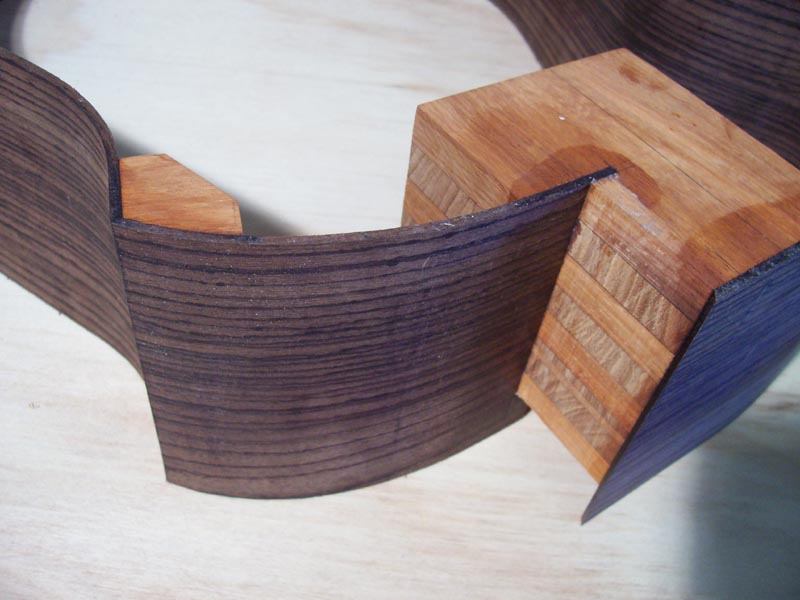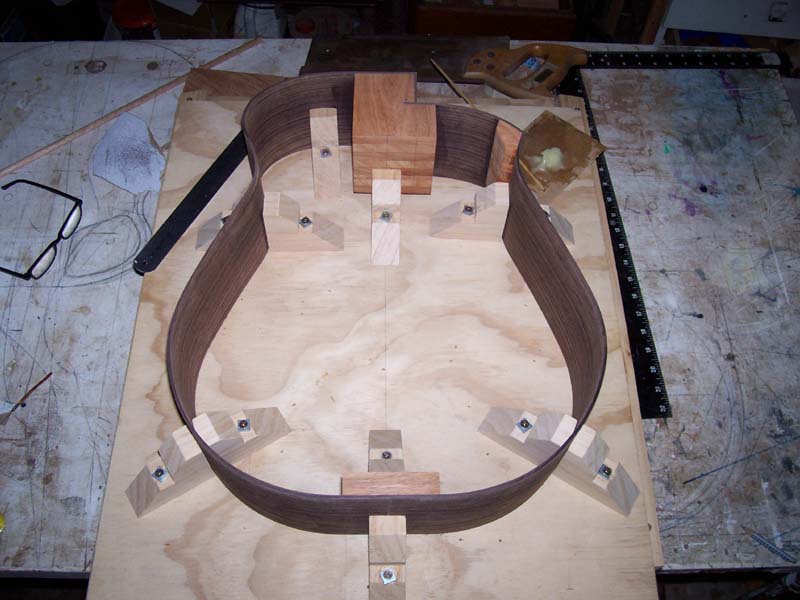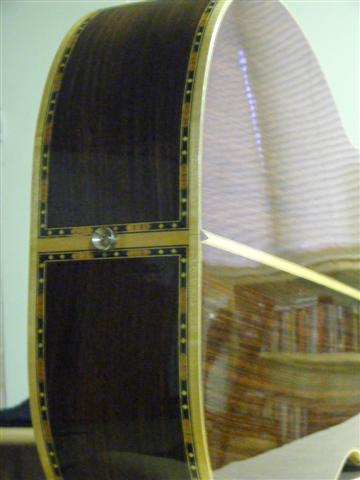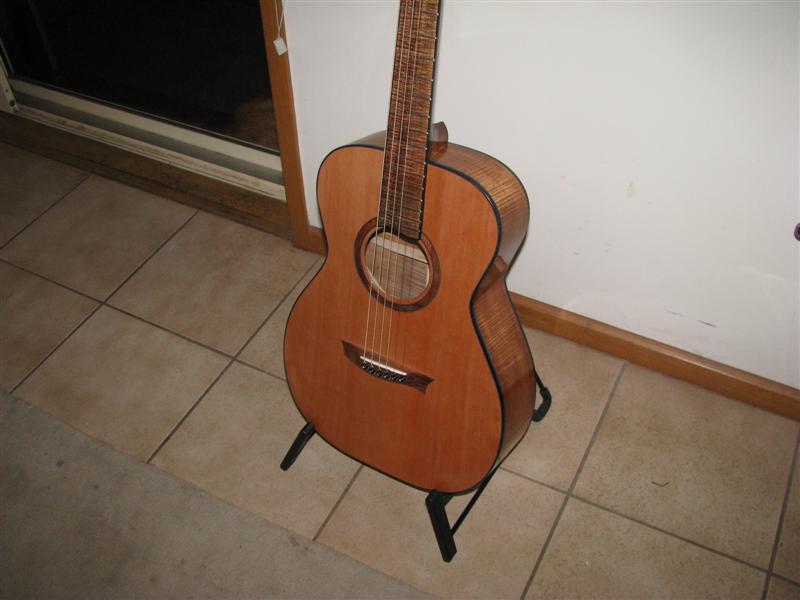
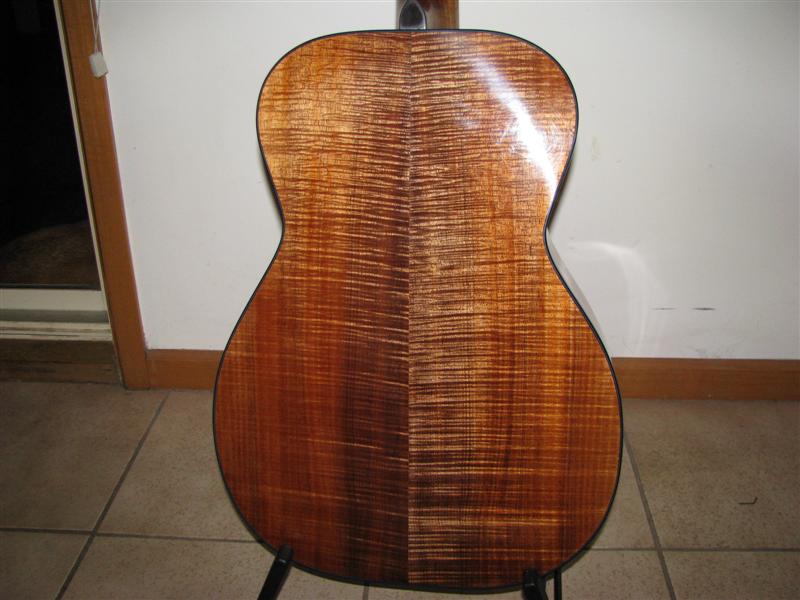
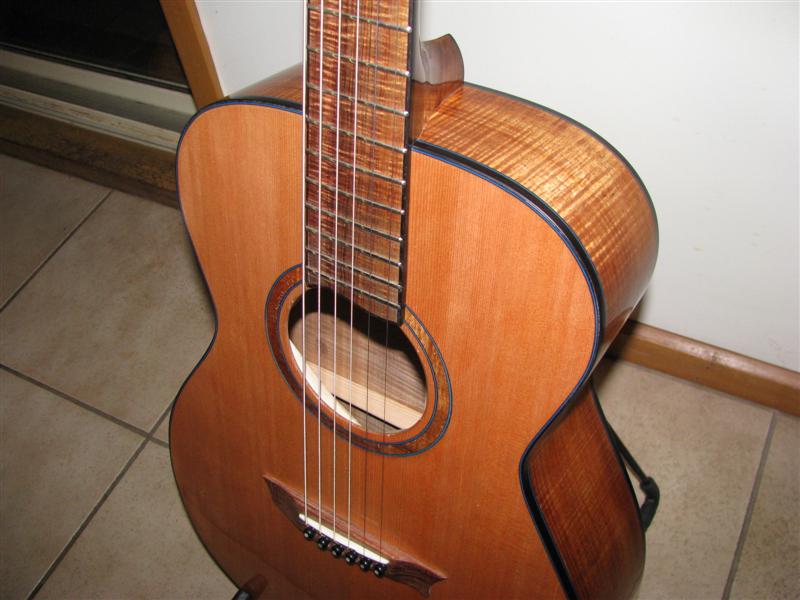
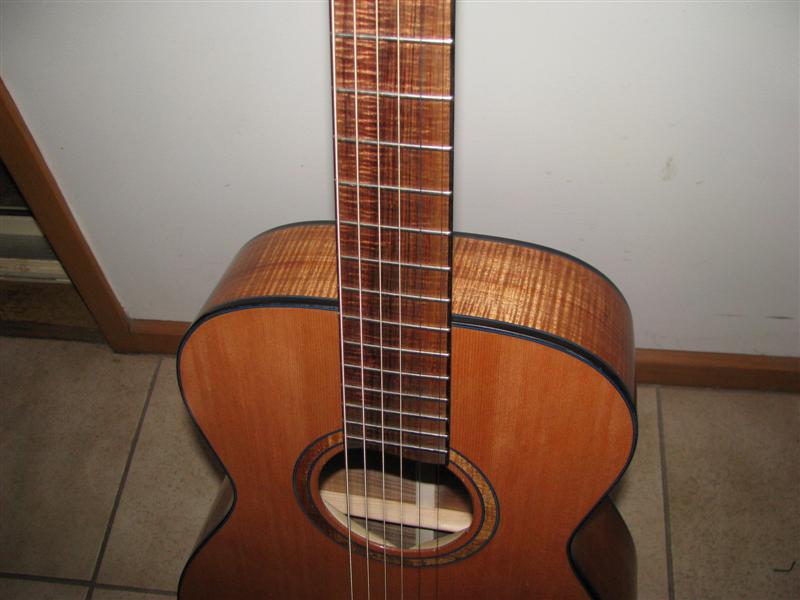
This is the second one of these we've built with first one residing in Tasmania now.
They are identical except that the first one had a top thickness of 2.75mm and the second I left a little thicker at 3mm. The first was made from Victorian Blackwood, the second from Tasmanian Blackwood (for all intents and purposes identical wood - similar weight and density) Bridges on both were Blackwood and of similar weight. The King Billy was cut from the same billet.
The second instrument is way louder than the first and has incredible presence in the midrange. It is quite a remarkable sounding instrument. I'm sure Allen MacFarlen will chime in here as he was quite surprised when he played it last week.
The only major difference is this.
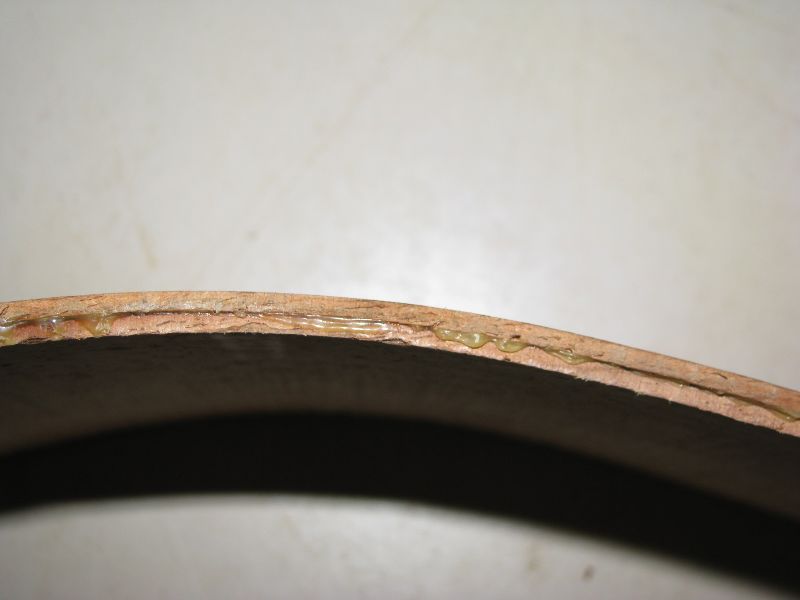
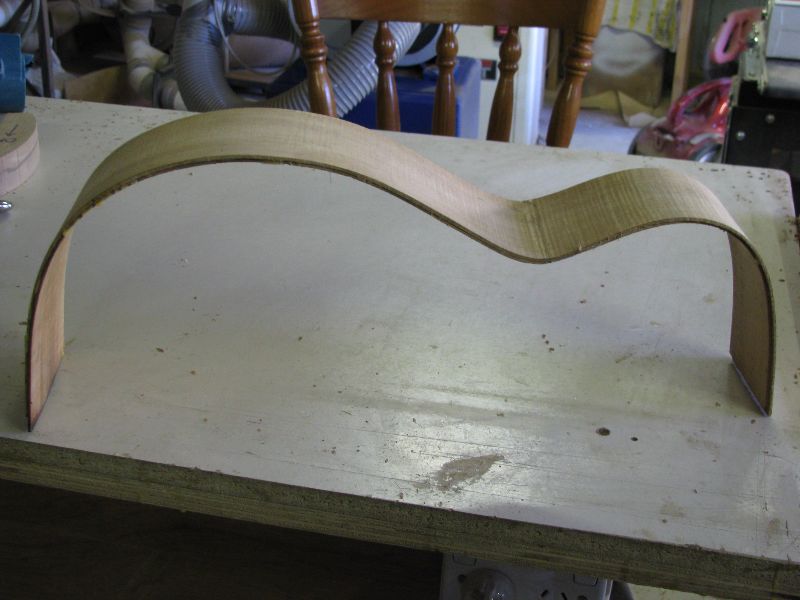
Double sides!
I know a few builders in the States are laminating sides similar to this but most of them are taking each layer down to around .040" so when they are glued together they are around the same thickness as solid sides when bent.
These ones have been bent at .080 and then glued together for a thickness of.160". So they are very thick and very stiff. But the finished instrument isn't that heavy.
The theory here is to reduce vibrational damping in the sides and allow the top and back to reflect the energy of the top and back thus giving the instrument greater power.
It certainly seems to have worked in this case but I'd like to try it on the next few instruments to ensure it wasn't simply an aberration.
I am surprised there is SO much difference between this and the previous guitar. Pleasantly surprised mind you but still sceptical until we can reproduce it.
Is anyone else doing anything similar? (building guitars with plywood sides
